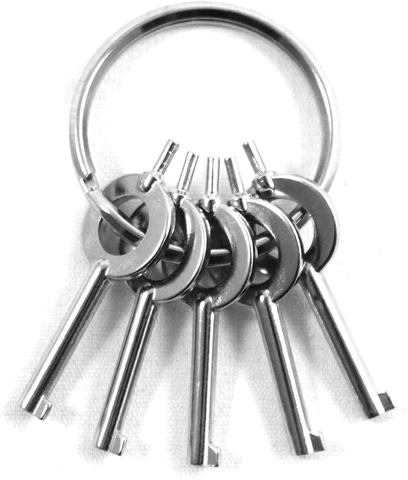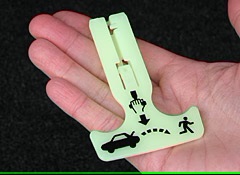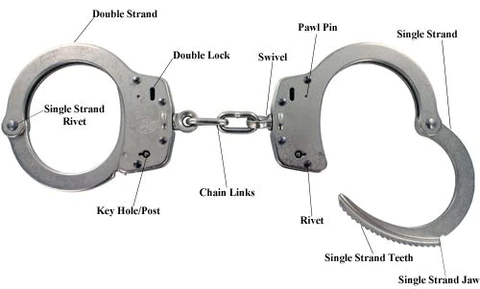Menu
Kidnapping is an unfortunate reality that all South Africans have to live with. Being prepared for any eventuality and having the knowledge to keep yourself and your family alive and out of danger should be of paramount concern to everyone.
The simple act of being more vigilant and focusing on your observational awareness will already make you less of a soft target. However, by being prepared and armed with the correct knowledge and a couple of tools you can not only decrease your odds of being targeted but also increase your chances of escaping a dangerous situation.
Your most likely chance of escape is always the moment they grab you or attempt to capture you, with every minute that passes, your chances of escaping decrease. Once you have been tied up and/or placed into the trunk of a car your chances diminish even further, and unfortunately, once they have you at a secondary location your chances are slim to none.
There are a few things you should know to increase your odds of survival:
1. How to hide tools on your body
2. How to escape from bindings
3. How to detect and defeat surveillance
One of the most daunting parts of being abducted is when the captives tie you up in preparation to transport you to a secondary location or to prevent you from escaping from where they have you captive. Thus, it is always a good idea to keep a pair of rudimentary tools on your person at all times to increase your chances of escape.
All handcuffs use a standardized locking mechanism; thus, all handcuffs can be unlocked with the same key. Therefore, it is always a good idea to keep a handcuff key on your person in the event that you are captured and handcuffed. A good tip would be to hide it where it is easily concealable and most importantly comfortable.

Similar to the handcuff key, it is also a good idea to hide a razor blade/Manora blade in the same spot as the handcuff key so that you are able to free yourself should the attackers tie you up with a makeshift lashing. A good trick for keeping the blade covered, is to wrap it up in duct tape to prevent you from injuring yourself whilst keeping the blade on you at all times.
Find a spot on your person to hide these tools so that it will be possible for you to “wear” them every day but still be able to access them in the event of you being bound or tied up. Some good spots to hide these tools are:
One of the most common means of abduction in South Africa is by carjacking e.g. assailants attempt either a carjacking and abduct the driver or they attempt an abduction and utilise your vehicle as a means of doing so. Either way, the two generally go hand in hand, which is why familiarising yourself with the mechanics of your own vehicle, especially the inside of the trunk is always a good idea.
Familiarise yourself with the opening mechanism of the trunk from the inside. Check to see if your vehicle has a release catch in the trunk (most modern vehicles have this built-in).

Once you have been placed in the trunk of your own or any other vehicle do whatever it takes to escape the trunk as soon as possible.
Once bound you should aim to free yourself as soon as possible. Cut yourself free with a stashed razor in your clothing as quickly as you can, however, if you are in view of your attackers do not make it known that you have freed yourself until you get an opportunity to escape.
If bound with handcuffs, unlock the cuffs with the key that you have stashed on your person or in the event of the key being lost or confiscated, pick the handcuffs with any small object that is strong enough to move the mechanism. “Picking” a pair of handcuffs is surprisingly easy, as mentioned, before the locking mechanisms are very rudimental, it is as easy as pushing the locking pin away from the mechanism.

In the event that you lose the key, or it gets confiscated use a strong object to break the bow portion of the cuff by prying it open. If you are placed in the back or front seat of a vehicle whilst handcuffed, pry open the double-strand portion of the cuff by inserting the safety buckle in between the two strands and prying open the rivet.
Most of the time attackers will study their targets for a couple of days or even weeks before they attempt an abduction. If you are ever in a situation where you feel like someone is watching you, following you or you are being stalked it is usually too late.
You want to be the “grey man”, you want to blend into your surroundings as if you are invisible and not stick out. However, at the same time, you want to make yourself a hard target by projecting confidence, making yourself look competent.
A good technique to use for detecting and defeating surveillance if you think that you are being followed or stalked is using this simple acronym: T.E.D.D
Time: Switch up your routines and the times that you leave your home or the time when you come back home, and your daily routines in general.
Environment: Change the areas and places that you go to, try using a different route to work every day, fill your car at a different fueling station every time. Do your best to avoid creating patterns in your day to day business, this in itself will deter would-be attackers as they will have no base to work from.
Distance: Increase and decrease the distances between your daily stops by visiting different locations, be sporadic.
Demeanor: Your demeanor should be one of confidence. Project confidence and make it look like you know what you are doing, be competent. Keep your head on a swivel, appear as if you're always ready and as if you always have a plan. Never show that you are lost or scared.
If you notice someone or feel like you are being watched or stalked stay vigilant and inform someone close to you that you feel like you are being stalked and that you feel unsafe. Change up your routine and change your demeanor and use the T.E.D.D. method to deter the would-be attacker.
If you notice the same person even after you have changed up your times, environments and distance. It is a clear sign that something is not right and that you're being stalked. If the person's demeanor changes after you have changed your routine, it is a clear sign.
If you are traveling in a vehicle, do not attempt to race away from them as this will potentially put you in even greater danger by being in a high-speed chase. Instead, do the opposite, drive sporadically. Drive slowly and then speed up again, turn on your left indicator and then turn right. If the same vehicle stays behind you even after you have driven in an “unacceptable” manner it is a clear sign that you are being followed. In this event stay calm and drive to the closest police station and contact someone close to you and tell them what you are doing whilst keeping them on the phone the entire time.
Compiled by
Conrad Baartman
COO